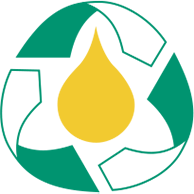Greetings from Rod Rosenfelt, Chairman,
National Used Oil Material and Antifreeze Advisory Council
Welcome to the inaugural newsletter from Canada’s Used Oil Management Associations (UOMA), the industry-led stewardship program for the recycling of used oil and antifreeze materials. The program is recognized globally as the extended producer responsibility program (EPR) for potentially hazardous materials that works environmentally, economically and socio-economically.
Our newsletter is designed to keep you current on the successes, challenges and operational updates from our seven associations. This issue is about collaboration.
You can learn more about the program, both provincially and nationally by visiting www.usedoilrecycling.com. As well, there is the link to the recently produced 15 minute video titled “How the West & East Were One”. It tells the story of the development of our program from the beginning in the late 1980’s. Informative, entertaining and well worth the time.
As with any organization, we have our acronyms. For example, here is how the seven provincial associations will be identified in the articles:
- BCUOMA – British Columbia Used Oil Management Association
- AUOMA – Alberta Used Oil Management Association
- SARRC – Saskatchewan Association for Resource Recovery Corp.
- MARRC – Manitoba Association for Resource Recovery Corp.
- SOGHU – Société de gestion des huiles usagées, Quebec
- SOGHUOMA NB – New Brunswick
- SOGHUOMA PE – Prince Edward Island
- UOMA – Used Oil Management Association – general term referring to the provincial programs.
- NUOMAAC – National Used Oil Material and Antifreeze Advisory Council (national body representing the seven UOMAs)
Thank you.
Rod Rosenfelt
Chairman,
NUOMAAC


